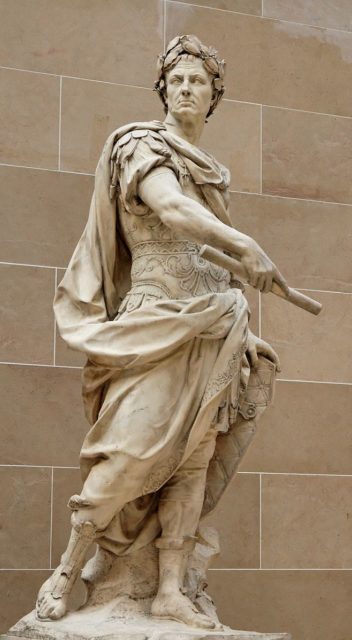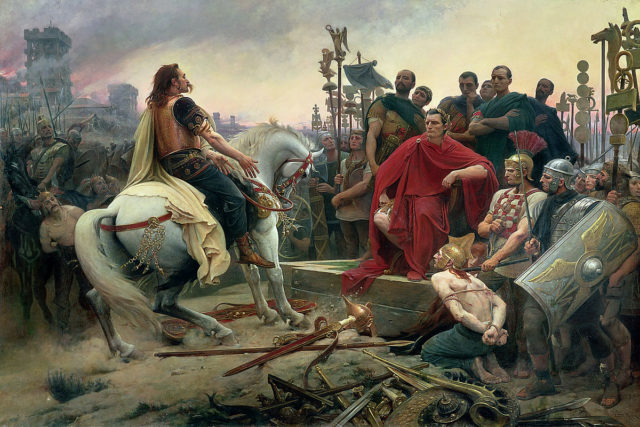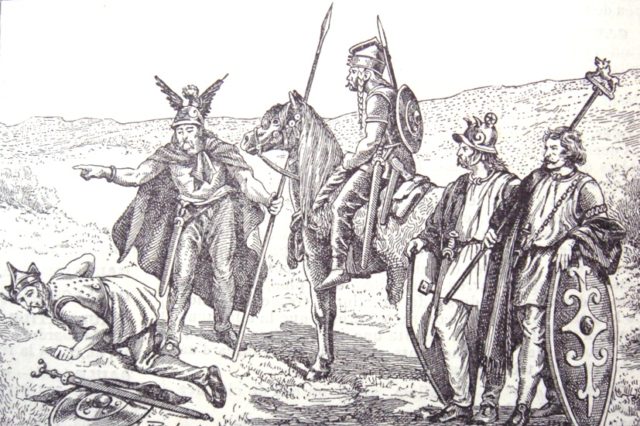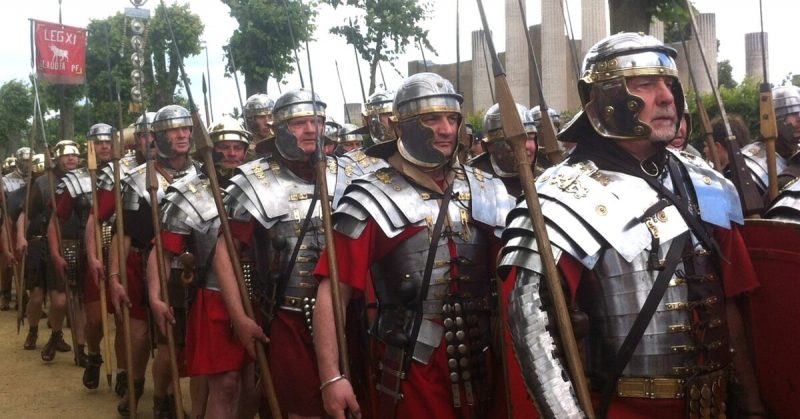When Julius Caesar invaded Gaul, he was not facing a united nation. Instead, he had to fight a range of various tribes who dealt with the Romans in different ways.
The Aedui
The Aedui played a significant role in the conquest of Gaul. One of their aristocrats, Dumnorix, was among the group who plotted to bring in the Helvetii, triggering Caesar’s invasion. It is not clear what Dumnorix hoped to achieve beyond seizing local power, but the scheme was discovered and thwarted. Quickly brought to heel, the Aedui went on to supply Caesar with troops, cooperating with him in return for domination over their neighbors.
The Atrebates and Viromandui
Allying with the Nervii, the Atrebates and Viromandui took part in a failed surprise attack on Roman troops in 57 BC. They were driven back when Roman legionaries hastily abandoned construction tools and showed how quickly they could form battle formations.
The Aduatuci
After surrendering to the Romans, the Aduatuci broke the terms of their surrender, backing the Nervii in a revolt in 57 BC. Caesar reconquered the Aduatuci and punished them by selling all 53,000 of them into slavery. Caesar made a huge profit from the sale.

The Arvenians
The most famous Gaul to resist Caesar was Vercingetorix, a young Arvenian noble. Uniting a large confederation of tribes, he led a revolt against the Romans in 52 BC. His authority maintained Gallic morale even in the face of defeat. After failing to relieve the siege of Alesia, he knew his revolt was doomed. He surrendered to Caesar, spent six years as a prisoner, and was executed during a ceremony celebrating Caesar’s successes.
The Boii and Tulingi
Allies of the Helvetii, the Boii and Tulingi sent troops to support them in their battle against Caesar in 58 BC. They managed to flank the advancing Romans and almost surround them. Then the Romans regained the initiative, drove the Boii and Tulingi back against the Helvetii wagon camp, and slaughtered them.
The Carnutes
Carnute territory included sacred ground at the heart of Gaul where tribal leaders met annually to settle disputes. With this land threatened by Roman advances, the Carnutes were among the first to back Vercingetorix’s revolt in 52 BC. After the rebellion had failed at Alesia, they suffered a series of punitive raids throughout the winter, before being crushed by the Romans in 51 BC.

The Curiosolites
In 56 BC, the Curiosolites and their allies attacked a hilltop Roman encampment. They were so exhausted by the time they reached the top of the slope they were easily defeated.
The Eburones
Under their leader Ambiorix, the Eburones trapped a group of Romans in their camp in the winter of 54-53 BC. Tricking the Romans with a false promise of safe conduct, Ambiorix lured them out and slaughtered them. His tribe was crushed with many others in 51 BC.
The Helvetii
The trigger for Caesar’s invasion of Gaul was the migration of the Helvetii from Switzerland through Roman Gaul in 58 BC. He defeated them in battle and then pursued them until they surrendered. The survivors were forced to return east.
The Morini and Menapii
Based on the Channel coast, these tribes earned Caesar’s ire by siding with the Veneti. They avoided conquest in 55 BC by withdrawing into marshland when Caesar attacked. Two years later he returned, built causeways across the marshes, and forced them to surrender.
The Nervii
The Nervii were the tribe that came closest to defeating Caesar, thanks to a surprise attack on a camp he was constructing in 57 BC. The discipline of the legions and his leadership from the front meant Caesar beat them in that battle. In 53 BC he launched his own surprise attack and conquered them.
The Remi
A northern tribe, the Remi provided Caesar with intelligence on their neighbors rather than try to resist Rome.

The Suessiones
In 57 BC, Caesar besieged a Suessione town while their warriors were away on campaign. The Gallic warriors returned and sneaked into town through his lines. Despite this achievement, they surrendered rather than keep fighting, having seen the effectiveness of the Roman siege.
The Treveri
Tricked into attacking the Romans uphill, the exhausted Treveri were easily defeated in 53 BC. Two years later, they were among the tribes who surrendered to Caesar’s mopping up operations.
The Usipi and Tencteri
In 55 BC, the Germanic Usipi and Tencteri arrived in northern Gaul. Caesar refused to allow them to settle there, so they attacked his cavalry, defeating them.
In return, Caesar attacked their camp. Caught by surprise, the Usipi and Tencteri were driven back to the Rhine, their men, women, and children slaughtered by the vengeful Romans.
The Veneti
A wealthy tribe from the coast, the Veneti made their living from trade and the sea. When the Romans came, they retreated into hillforts on isolated promontories, departing by sea if it looked like the fort might fall.
To defeat them, Caesar had a fleet of galleys built. Their design was not as well suited to the rough Atlantic waters as the Veneti vessels, and the Romans struggled.
Eventually, the two fleets faced each other in a battle that lasted almost all day. Using grappling hooks, the Romans pinned the Veneti ships in place, removing their advantage of mobility. With their fleet destroyed, the Veneti were forced to surrender.
Caesar made an example of the Veneti. Their elders were executed and the rest sold as slaves.
The Vocates and Tarusates
In 56 BC, Caesar’s subordinate Crassus marched south through Gaul toward the Pyrenees. There he was confronted by the Vocates and Tarusates, together with veteran Spanish allies who had fought alongside Roman rebels in the 70s BC.
With the enemy cutting off roads and supply routes, Crassus needed to act decisively. He attacked their camp, at first finding it vigorously defended. On discovering it was well protected only at the front, he surrounded the camp and defeated its inhabitants. This victory led to the surrender of vast swathes of south-western Gaul.
Source:
Kate Gilliver, Adrian Goldsworthy and Michael Whitby (2005), Rome at War: Caesar and his Legacy.
